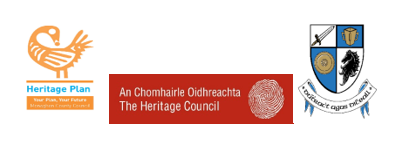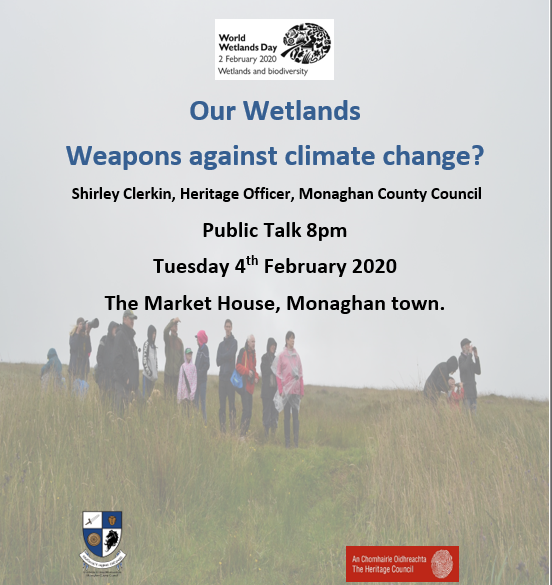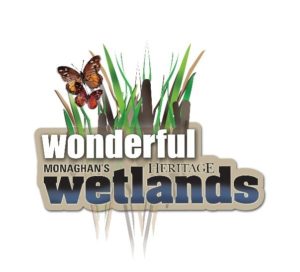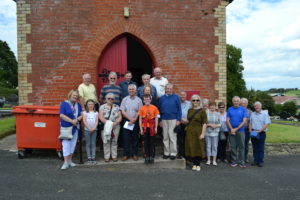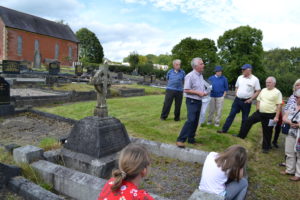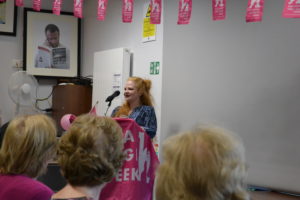Fortunately there is a fine heritage of historic buildings in County Monaghan, many of which are quirky and full of personality.
Saturday’s heritage tours of Bessmount Park and Annaghmakerrig demonstrated how hard stone, brick and slate can tell stories of their builders, owners and occupants.
Daisy Mountgomery and the Clogher Historical Society guided crowds around the gothic fairytale that is Bessmount Park, a few kilometres from Monaghan town. The Mountgomery family bought the house in the early twentieth century.
Frances (née Hatchell) and William Henderson transformed this late Georgian house into a gothic extravaganza in 1868.
The depictions of nature around the front porch, of monkeys peaking out beneath leaves, bats and other animals are in keeping with the fashion of the time that architecture is “made beautiful when adorned with art inspired by nature”.
The house has a fantastic central tower with decorative bands of yellow and red brick, and humorous stone portraits of the married couple Frances and William adorn either side of the door. Daisy’s passion for the house and its history, and keeping it maintained for the present and future generations literally gave the day a “tour de force”.
Christopher Fitz-Simon presented Annaghmakerrig, located close to Newbliss, and now known as the Tyrone Guthrie Centre. Sir Tyrone Guthrie was a well-known theatre producer and director who left the house and grounds to the Ireland as a place of retreat for artists on his death in 1971. It opened as such ten years later, and artists have been making their way to the Monaghan countryside for a week or two ever since, where it’s atmosphere and amenities have enabled many creative works to be thought of, started and finished. Christopher and his mother spent time at Annaghmakerrig during World War Two when Mrs Guthrie, Tyrone’s mother took in paying guests to meet the cost of running the house and as a way of keeping on staff during difficult times. Visitors were guided through the drawing room, library and one of the bedrooms now used for artists. The house is jointly funded by the Arts Councils, north and south and by the residency fees from the artists. The OPW look after the maintenance of the buildings and grounds.
Rachael Hegarty, a poet from Finglas, together with some other artists presented some work in the Music Room. Rachael’s most recent publication entitled May Day 1974 contains 33 poems, one for each of the victims of the Dublin-Monaghan bombings. As a child she and her mother were caught up in the Talbot Street explosion in Dublin. She read from the book, first an excerpt from the coroner’s court and then a ballad. Her words captured the deceased person with delicacy, warmth and honesty of language.
A tour of the artists studios and the dance studio finished the tour, once the legendary Annaghmakerrig tea and traybakes were consumed. A wonderful young dancer from Sicily silenced all in the dance studio with his balance, poise, and the expressiveness of every movement.
Shirley Clerkin, Heritage Officer said “Thank you to everyone who helped us with the heritage week open days. The tour guides, participants, those who helped behind the scenes, and people who came all made heritage week a great success. It is wonderful to see such vibrancy in these historic buildings, enabling them to have stable and long term futures as part of Monaghan’s heritage and landscape.”
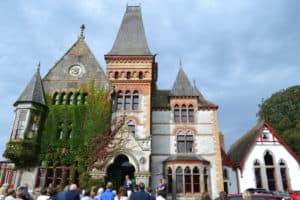
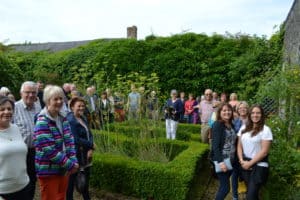
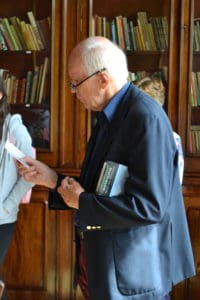
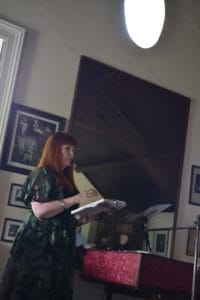
Photos:
Bessmount Park, a gothic fairytale, Monaghan.
Daisy Mountgomery pictured amongst one of the tour groups at Bessmount Park.
Christoper Fitz-Simon consults his notes in the library at the Tyrone Guthrie Centre, Annaghmakerrig, Newbliss, County Monaghan.
Rachael Hegarty reads from her book May Day 1974

